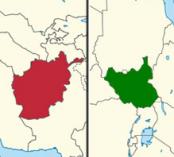
The key element of any health system is the people who run it. Nowhere is this more true than in countries in the midst of, or recovering from, conflict. Indirect or direct threats faced by health workers exacerbate a population’s challenges in seeking and receiving health care.
In conflict settings, health workers may be forced to flee to safe havens as refugees, internally displaced people, or leave the country as migrants—if they have the means to do so. Some of the most capable are absorbed into international agencies. Those who remain frequently have insufficient resources to perform their jobs and must carry on as best as they can under daunting circumstances.
This situation has worsened in recent years with a growing number of direct attacks on health workers in fragile states, such as those against polio vaccinators in Pakistan and Nigeria. These blatant violations of the Geneva Conventions inhibit an already difficult environment for the delivery of health services and the recovery or development of the health system.
Weak health systems in Guinea, Liberia, and Sierra Leone were largely responsible for the rapid spread of the Ebola virus last year in those three countries – all fragile states recovering from conflict. By the end of February 2015, 830 health care workers had been infected in the outbreak and 488 had died.
These threats and challenges highlight the need for the planning, development, deployment, and retention of an appropriately trained workforce as an essential element for adequate health care provision in fragile states.
Signs of State Fragility: Erosion of Essential Functions
Although myriad issues generate state fragility, there are similarities or patterns. The lack of an effective state apparatus leaves health ministries poorly staffed and under-resourced in all areas of the health system. Conflict worsens the situation by diverting already meager resources into war and security efforts. The lack of effective policy development and planning serves as another huge obstacle for health systems attempting to recover.
Deficiencies also extend to information needed to manage the health workforce. Job descriptions become obsolete and new cadres of health workers are trained by humanitarian nongovernmental organizations (NGOs) according to perceived needs rather than national policy, resulting in numerous health workers who are difficult to engage during the post-conflict period.
Conflict also invariably results in uneven geographic dispersion of health workers, with many migrating to urban areas, leaving remote rural areas and those most affected by insecurity with minimal access to health care.
Health Workers: Cornerstone of a Resilient Health System
Over the years, Management Sciences for Health (MSH) has learned that the cornerstone of a resilient health system lies in the quality of the health workforce. In addition to safeguarding the immediate well-being of health providers working in insecure environments, it’s equally important to build a sustainable future. This is done by working with leaders and stakeholders at all levels to plan and rebuild the workforce and strengthen the governance and management systems required to support them.
Afghanistan: Rebuilding in the Midst of Crisis
MSH was one of the first international NGOs to return to Afghanistan after the fall of Taliban in 2002 to support the health sector’s post-conflict recovery. Given the fragility of the health workforce, MSH assigned a resident human resources for health (HRH) expert who collaborated with the new HR director at Afghanistan's Ministry of Public Health (MOPH) to form a leadership group that included representatives from the government, professional associations, unions, universities, and civil society. This group established a Directorate of Human Resources and helped link its work to that of other departments. The directorate established a national registration system and a database of health workers, including those who had fled the country and were coming back for the first time. A board was established to test and certify staff in nine categories of nursing, midwifery, and allied health.
The full article continues at http://www.msh.org/blog/2015/02/27/lessons-in-post-conflict-recovery-developing-a-health-workforce-in-afghanistan-and on MSH’s website.
MSH is a steering committee member of the Safeguarding Health in Conflict Coalition, a group of over 30 organizations who share a commitment to the protection of health workers, services, and infrastructure from violence. Members include notable academic institutions, international and country-level NGOs with a strong focus on human rights and/or health, relief organizations, and professional associations. The secretariat is shared by IntraHealth International and the Center for Public Health and Human Rights at the Johns Hopkins Bloomberg School of Public Health.

